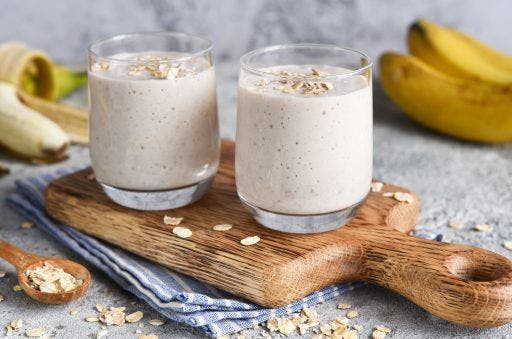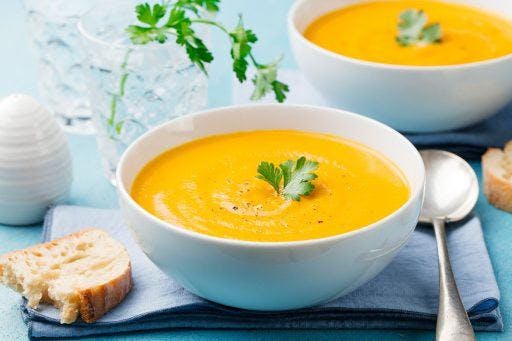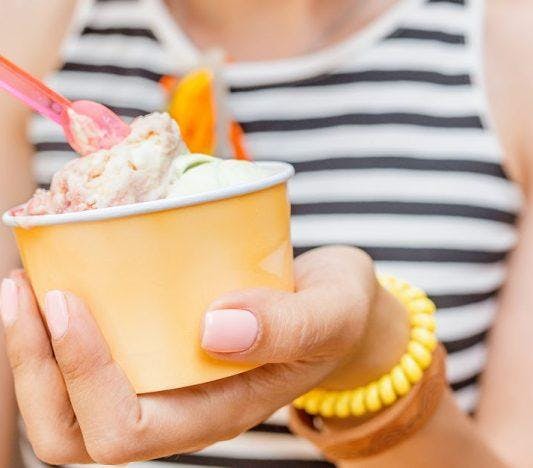Your dentist might suggest an extraction as a last resort when no other measures can save a damaged tooth. After the procedure, you need to take extra precautions to ensure a smooth and painless recovery. These include sticking to a diet of primarily soft foods that require minimal chewing.
In the first few hours post-extraction, go for cold or lukewarm foods while the anaesthetic wears off. Frozen treats should also help with swelling. Once you’re three days in, you can move on to hot foods. By then, blood clots should be more stable and less prone to bleeding.
Soft Foods You Can Eat After a Tooth Extraction
Your options during recovery won’t be the most exciting, but a few twists can elevate even the blandest basics! Think of ways to improve the experience with seasonings and unique ingredient combinations. Here’s a list of safe-to-eat dishes to tide you over until your next cheeseburger.
1. Milkshakes or smoothies

Take any excuse to drink diner-style milkshakes like a kid again! Your best bet is a smooth, silky shake with no grains, seeds, or fruit chunks that can get stuck in the socket. Ditch the drinking straws – the suction from slurping can dislodge blood clots, leading to painful dry sockets.
2. Yoghurt or ice cream
Alternatively, go for a creamy smoothie bowl with ice cream or yoghurt. Greek-style might be too tangy or acidic when you’re in recovery, so stick to the regular stuff. Avoid ice cream with chunky or chewy mix-ins like nuts or fudge. When opting for popsicles, be careful not to slurp or suck.
3. Gelatine desserts
There’s a reason plain, fruity Jell-O is a go-to snack after oral surgery. It’s easy to eat, gentle on your teeth, and even packs a ton of protein, thanks to its collagen content. Enjoy it chilled for added soothing benefits! You can also try various puddings, icebox cakes, and sauces thickened with gelatine.
4. Smooth, lukewarm soups

Broth-based and blended soups are ideal since they’re free of large chunks of meat or veggies. Roast some produce, then blitz everything with a protein-rich broth until smooth and homogenous. Season lightly with salt, pepper, and mild spices. As tempting as it is to top your bowl with crispy croutons, you’ll want to lay off anything crunchy for now. Have something soft, like milk bread, on the side instead.
5. Cheese
Soft, crumbly cheeses like ricotta, cottage cheese, and melt-in-your-mouth burrata are filling, protein-rich, and excellent sources of calcium. You can enjoy them alone, mixed into scrambled eggs, or spread over (untoasted!) bread. Top your soup with a spoonful of cheese for added creaminess!
6. Mashed potatoes
Who doesn’t love mashed potatoes? Use starchy spuds like russets to keep yours silky without any unappetizing gumminess. Add cream cheese, butter, and garlic to up the flavour. Be sure to smash all the chunks and save the skins for later! You can have them when you’re back to your full chewing capabilities. Complete your mash with homemade gravy to make each bite a little more luxurious.
7. Eggs

Eggs are versatile and generally safe to eat no matter how you like to cook them. They’ll help you meet your daily protein and fat needs, too. Go for a fluffy scramble with melted cheese, soft-boiled eggs with a dash of soy sauce, or a classic sunny-side up. By day three, you should be able to have eggs with noodles and broth for a more substantial meal!
8. Pasta or noodles
Since slurping and chewing are a no-go, you should opt for small, tube-shaped pasta like macaroni or penne over longer varieties. If spaghetti is all you have on hand, try to cut them into easier-to-manage forkfuls before diving in. For the sauce, use something creamy and light with nothing crispy or chewy mixed in. Finely ground or shredded meat are fine additions, too.
Instant noodles are another accessible alternative – most even come with soup already. Just make sure to avoid anything spicy! Tip: use only half the seasoning packet since they’re typically high in sodium. Too much salt can dehydrate you, which spells trouble for anyone in recovery.
Foods to Avoid After a Tooth Extraction
Thinking of grabbing a bag of potato crisps after your operation? Not just yet! Here are some foods to avoid after the extraction:
- Crunchy food
- Chewy food
- Hard candies
- Spicy dishes
- Acidic foods and drinks
Are you planning to undergo ClearCorrect treatment? Your orthodontist may recommend an extraction if necessary to maximize teeth straightening results. They’ll prescribe a dynamic pontic (a synthetic tooth) to fill the space while it closes during the alignment process. If it comes to that, prepare a list of soft foods you can safely enjoy for all your post-extraction meals. While this guide is helpful, it’s not definitive or prescriptive. Heal at your own pace, eat only what you can handle, and stay hydrated!



